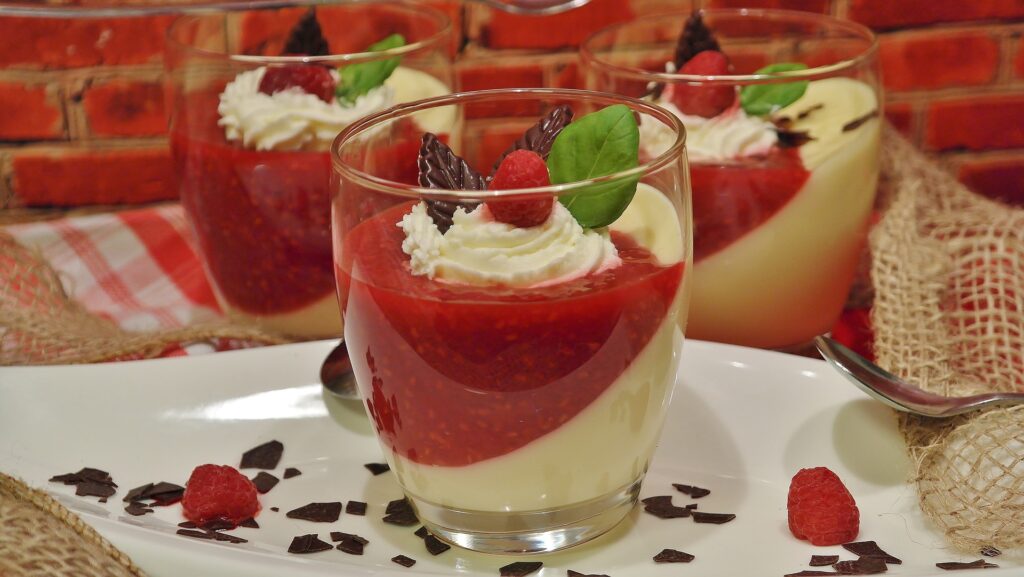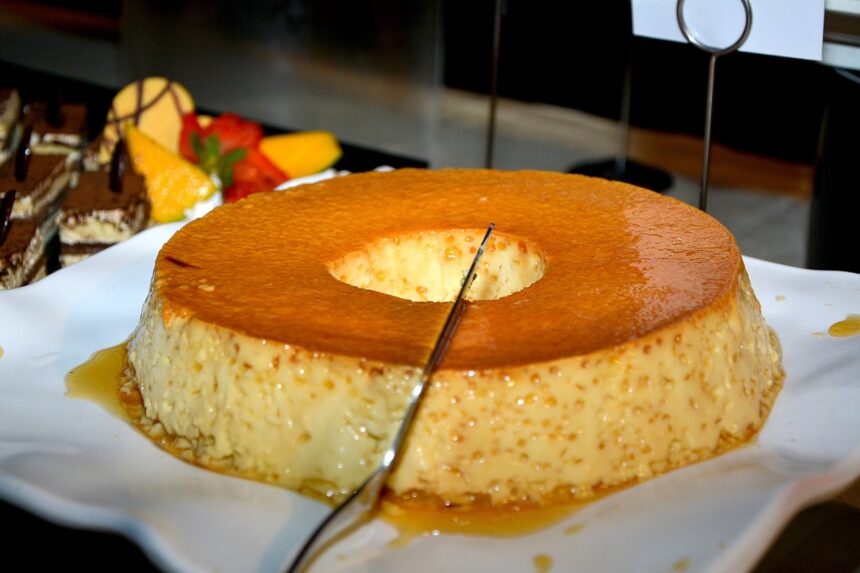Yorkshire puddings, those airy, golden delights that rise majestically in the oven, are a quintessential part of British cuisine. Often served alongside a Sunday roast, they have captured the hearts (and stomachs) of many around the globe. Yet, despite their popularity, many home cooks shy away from making their own, opting instead for the convenience of store-bought versions. But why settle for less when you can whip up a batch of warm, fluffy Yorkshire puddings in your own kitchen? In this post, we’ll delve into how to make Yorkshire puddings, offering a step-by-step guide that will have you serving up this classic dish with confidence.
A Brief History of Yorkshire Puddings
Before we dive into the recipe on how to make Yorkshire puddings, it’s worth exploring the rich history behind these delightful creations. Originating in the county of Yorkshire in northern England, Yorkshire puddings date back to the 18th century. Originally known as “dripping puddings,” they were designed to utilize the drippings from roasting meat.
The name “pudding” itself comes from an old English term that referred to any dish cooked in a mold. The earliest written recipe for Yorkshire pudding appeared in a cookbook published in 1737, and the dish has evolved ever since. Traditionally, Yorkshire puddings were served as a first course to fill diners up before the main meal, making the most of the inexpensive ingredients available at the time. Today, they are celebrated not just as a side dish but as a beloved comfort food that embodies the essence of British home cooking.
Ingredients You’ll Need
One of the best things about Yorkshire puddings is their simplicity. You don’t need a long list of exotic ingredients to create this delicious dish. Here’s what you’ll need:
- 140g plain flour (about 1 cup)
- 4 large eggs
- 200ml milk (about ¾ cup)
- Salt (optional, to taste)
- Vegetable oil or beef dripping (for cooking)
With just flour, eggs, milk, and a touch of oil, you can create a dish that is not only comforting but also incredibly versatile.
Step-by-Step Guide: How to Make Yorkshire Puddings
Step 1: Prepare the Batter
- Mix the Dry Ingredients
Start by sifting the plain flour into a large mixing bowl. This step is essential, as it aerates the flour and helps to avoid lumps. Create a well in the center of the flour and crack in your first egg. - Incorporate the Eggs
Using a whisk, mix the flour and the egg together until you have a thick paste. This step is crucial for achieving a smooth batter. Gradually add each subsequent egg, making sure to fully incorporate it before adding the next. The aim is to create a cohesive mixture. - Add the Milk Gradually
Once all the eggs are mixed in, it’s time to add the milk. Pour it in gradually while whisking continuously. The key to a smooth batter is to avoid lumps, so take your time and whisk until you achieve a silky consistency. This gradual process helps integrate the milk without compromising the texture. - Rest the Batter
Cover your batter with cling film or a clean kitchen towel and place it in the fridge for at least 60 minutes. If possible, allow it to rest overnight. This resting period allows the flour to hydrate fully, resulting in a lighter, airier pudding when baked.
Step 2: Preheat the Oven
While your batter is resting, preheat your oven to 220°C (428°F) or 200°C (392°F) if you’re using a fan oven. A high temperature is critical for the Yorkshire puddings to rise dramatically, creating that classic puffed-up look.
Step 3: Prepare the Baking Tray
- Add Oil to the Tray
Take a Yorkshire pudding tray (or a muffin tin if you don’t have one) and add about a teaspoon of vegetable oil or beef dripping to each recess. You want just enough to cover the bottom of each cup. - Heat the Oil
Place the tray in the preheated oven for about 10 minutes, or until the oil is hot and shimmering. This step is crucial because the hot oil will create steam when the batter is added, helping the puddings rise beautifully.
Step 4: Bake the Yorkshire Puddings
- Fill the Tray
Carefully remove the hot tray from the oven. You should see the oil sizzling! Half-fill each recess with the batter. It’s important to move quickly here—this is where the magic happens. The batter will sizzle as it hits the hot oil. - Return to the Oven
Place the tray back in the oven and bake for 20-30 minutes. Resist the temptation to open the oven door during this time, as even a small amount of cold air can cause the Yorkshire puddings to deflate. - Check for Doneness
After about 20 minutes, peek through the oven door. Your Yorkshire puddings should be puffed up and golden brown. If they need a little more time, keep an eye on them; you want them to achieve a lovely deep golden color.
Step 5: Serve and Enjoy
Once your Yorkshire puddings are perfectly baked, remove them from the oven and let them cool for a minute. Use a fork or tongs to gently transfer them to a wire rack. This helps prevent sogginess by allowing air to circulate around the puddings.

Bonus Tips for Perfect Yorkshire Puddings
- Use Room Temperature Ingredients: Ensure your eggs and milk are at room temperature before mixing. This helps the batter rise better.
- Don’t Overmix: While you want a smooth batter, overmixing can lead to tough puddings. Mix just until combined.
- Experiment with Flavors: Once you’re comfortable with the basic recipe, consider adding herbs, spices, or even cheese to the batter for a creative twist.
Creative Serving Suggestions
Yorkshire puddings are typically served with roast beef and gravy, but don’t hesitate to get creative! Here are a few fun serving ideas:
- Sweet Treats: For dessert, fill leftover Yorkshire puddings with jam, whipped cream, or fresh fruit for a delightful sweet treat.
- Savory Variations: Consider filling them with sautéed vegetables, cheese, or a creamy mushroom filling for a delicious appetizer or light meal.
- Mini Yorkshire Puddings: Make bite-sized versions in a mini muffin tin for parties or as a fun hors d’oeuvre.
Common Mistakes to Avoid
Even though making Yorkshire puddings is simple, here are a few common pitfalls to watch out for:
- Cold Ingredients: Using cold eggs and milk can affect the rise. Always bring your ingredients to room temperature.
- Not Enough Oil: If there’s not enough hot oil in the tray, the batter won’t rise properly. Ensure there’s enough to create that sizzling effect.
- Opening the Oven Door: This is a cardinal sin! Opening the door lets cold air in, which can cause your puddings to collapse.
Conclusion
Now that you know how to make Yorkshire puddings, there’s no reason to shy away from this iconic dish. With just a few simple ingredients and some careful attention to detail, you can create light, airy, and delicious puddings that will elevate any meal. Whether you’re serving them with a traditional roast or experimenting with new flavors, Yorkshire puddings are sure to become a cherished staple in your kitchen.
So gather your ingredients, preheat your oven, and embark on the delightful journey of making Yorkshire puddings from scratch. I’d love to hear about your experiences and any tips you might have for perfecting this classic dish. Happy cooking!
FAQs About How to Make Yorkshire Puddings
1. What type of flour is best for Yorkshire puddings?
- Answer: Plain flour (all-purpose flour) is ideal for Yorkshire puddings. It provides the right structure and texture for a good rise. Avoid using self-raising flour, as it can make the puddings too dense.
2. Can I make the batter ahead of time?
- Answer: Yes! In fact, letting the batter rest in the fridge for at least an hour (or overnight) can improve the texture of your Yorkshire puddings, resulting in a better rise.
3. What can I use if I don’t have a Yorkshire pudding tray?
- Answer: A standard muffin tin works well as a substitute. Just ensure that the oil is hot enough before adding the batter to achieve a good rise.
4. How do I store leftover Yorkshire puddings?
- Answer: Store leftover Yorkshire puddings in an airtight container in the fridge for up to 2 days. To reheat, place them in a hot oven (around 180°C or 350°F) for about 5-10 minutes until heated through.
5. Why didn’t my Yorkshire puddings rise?
- Answer: Common reasons for Yorkshire puddings not rising include using cold ingredients, not having enough hot oil in the tray, or opening the oven door during cooking. Ensure all ingredients are at room temperature and follow the steps carefully.







